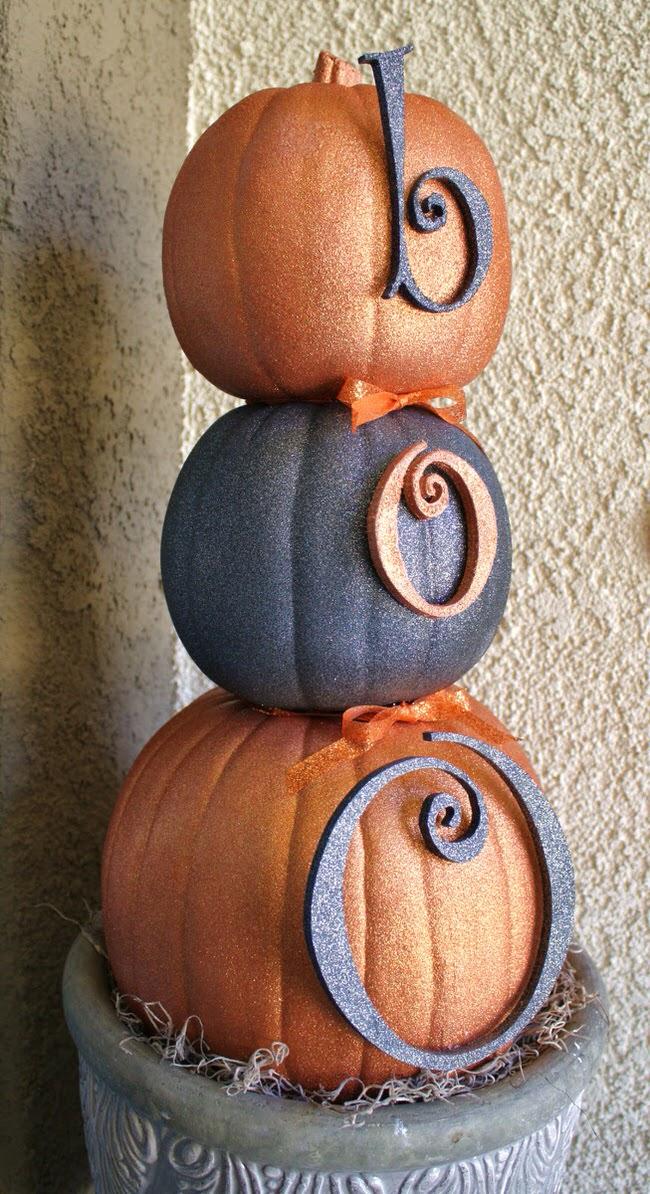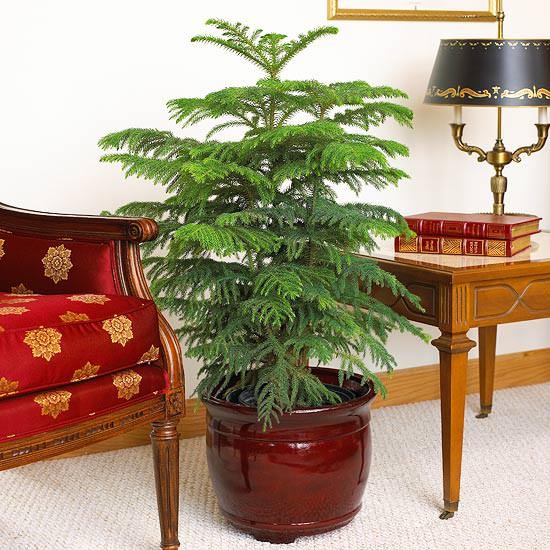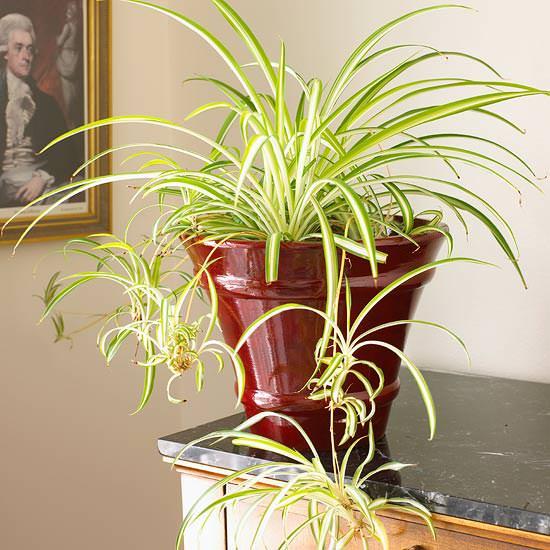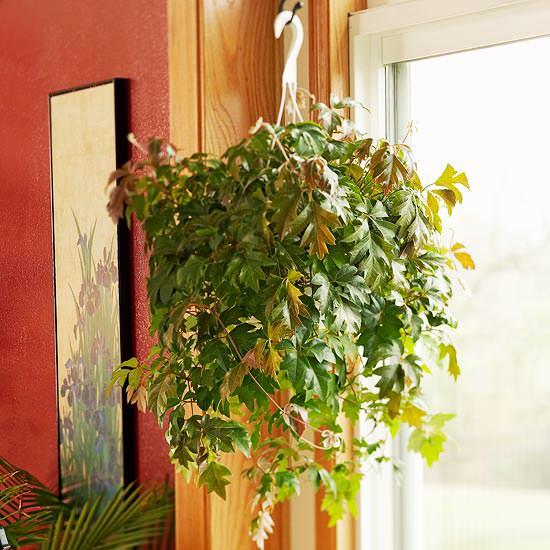文章
莹723
2020年12月25日

The Christmas season means a lot of things: Shopping for Christmas presents, decorating the tree, watching all the Hallmark Channel movies, and spending time with family. This year, we may be spending less time with family than we'd like. But that doesn't mean that we don't still need to plan out a holiday meal.

If you're looking to make things just a little bit fancier, this is what you've been looking for. From the filet mignon main course to rich Christmas side dishes infused with tons of flavor, this menu will leave your family beyond satisfied.
Appetizers:Three-Cheese Fondue
INGREDIENTS
1 tbsp. olive oil
2 shallots, finely chopped
3/4 c. dry white wine
1 1/4 c. heavy cream
8 oz. cream cheese
8 oz. Gruyére, grated (about 2 cups)
6 oz. Emmenthaler, grated (about 1 1/2 cups)
Pinch freshly grated nutmeg and black pepper
Cable-Kint Breadsticks, for serving
Roasted potatoes and Broccolini, blanched green beans, grapes, apples, and pears, for serving

DIRECTIONS
1. Heat oil in a medium saucepan over medium-low heat. Add shallots and cook, stirring occasionally, until tender, 5 to 6 minutes. Add wine and simmer until reduced to 1/2 cup, 5 to 6 minutes.
2. Add heavy cream, cream cheese, Gruyère, and Emmenthaler. Cook, whisking, until cheese is melted and mixture is smooth (make sure not to let it stick and scorch). Increase heat to medium-high and cook, whisking, until steaming and pourable, 3 to 4 minutes. Stir in nutmeg and pepper.
3. Transfer mixture to a fondue pot and serve with Cable-Knit Breadsticks, potatoes, Broccolini, green beans, grapes, apples, and pears alongside.
Main Course:Filet Mignon with Shallot Butter

INGREDIENTS
2 tsp. vegetable oil
1 tbsp. vegetable oil
1 small shallot
tsp. dried rosemary
1/4 tsp. dry red wine
2 tbsp. butter (no substitutions)
1 tbsp. chopped fresh parsley leaves
2 beef tenderloin (filet mignon) steaks
DIRECTIONS
1. In 10-inch skillet, heat 2 teaspoons oil on medium. Add shallot and rosemary; cook 2 minutes or until shallot is golden, stirring. Add wine. Cook 2 to 3 minutes or until most of wine has evaporated, stirring occasionally. Cool slightly. In small bowl, combine butter and shallot mixture. Stir in parsley. Refrigerate.
2. Wipe out skillet; add remaining 1 tablespoon oil. Heat on medium-high until very hot. Season steaks with 1/8 teaspoon each salt and pepper. Place steaks in skillet. Cook 3 minutes or until browned. Turn over; cook 3 minutes or until desired doneness (145 degrees F for medium-rare). Transfer to plate; let stand 5 minutes.
3. To serve, top steaks with red wine–shallot butter.
Side Dishes:Root Vegetable Gratin

INGREDIENTS
2 sweet potatoes, peeled and sliced
3 medium turnips, peeled and sliced
2 shallots, sliced
2 c. chicken stock
1 c. heavy cream
1/4 c. all-purpose flour
Kosher salt
black pepper
2/3 c. panko breadcrumbs
2 tbsp. olive oil
4 oz. blue cheese, crumbled
1 c. chopped hazelnuts
2 tbsp. chopped rosemary
DIRECTIONS
1. Preheat oven to 400 degrees F.
2. Layer sweet potato, turnips, and shallots in 8 (10-ounce) gratin dishes. Whisk together stock, cream, and flour. Season with salt and pepper. Pour cream mixture over vegetables. Bake, covered with foil, on a baking sheet, until vegetables are just tender, 40 to 45 minutes.
3. Meanwhile, combine breadcrumbs, oil, cheese, hazelnuts, and rosemary. Remove foil and top gratins with breacrumb mixture. Bake until golden, 12 to 15 minutes.
Dessert:Pine Tree Cake

INGREDIENTS
1 recipe Chocolate Chip Cake
1 recipe White Vanilla Frosting
1 1/2 c. white nonpareils
1 c. large flake coconut
1/2 c. each green, vibrant green, blue, and turquoise candy melts
12 (6") bamboo skewers
Candy: white sprinkles, crushed white rock candy
DIRECTIONS
1. Make Chocolate Chip Cake. Trim domed tops of two of the layers. Place one trimmed layer on a cake stand or serving platter and top with 2/3 cup frosting. Repeat, then place domed layer on top. Frost sides with 1 1/3 cups White Vanilla Frosting; leave top unfrosted. Chill 30 minutes.
2. Spread nonpareils on a small rimmed baking sheet. Carefully lift cake from the top and bottom and roll the sides in nonpareils to coat. Return to the cake stand or serving platter and frost the top with remaining frosting. Sprinkle coconut on top.
3. Melt candy melts in separate glass bowls in the microwave. Mix together some of the colors to make different shades of green and greenish blue. Spoon colors into separate small zip-top bags and snip a 1/8-inch hole in one corner of each bag.
4. Place bamboo skewers, 3 inches apart, on parchment- lined baking sheets. Working in a back and forth motion, drizzle melts over the skewers to create trees (be sure to leave 3 inches of the skewer uncovered). Repeat with all colors until you have 12 trees, all different sizes and colors.
5. Immediately decorate trees with candy. Chill until set, 25 to 30 minutes.
6. Gently lift trees from parchment and insert skewers into cake to create forest.


If you're looking to make things just a little bit fancier, this is what you've been looking for. From the filet mignon main course to rich Christmas side dishes infused with tons of flavor, this menu will leave your family beyond satisfied.
Appetizers:Three-Cheese Fondue
INGREDIENTS
1 tbsp. olive oil
2 shallots, finely chopped
3/4 c. dry white wine
1 1/4 c. heavy cream
8 oz. cream cheese
8 oz. Gruyére, grated (about 2 cups)
6 oz. Emmenthaler, grated (about 1 1/2 cups)
Pinch freshly grated nutmeg and black pepper
Cable-Kint Breadsticks, for serving
Roasted potatoes and Broccolini, blanched green beans, grapes, apples, and pears, for serving

DIRECTIONS
1. Heat oil in a medium saucepan over medium-low heat. Add shallots and cook, stirring occasionally, until tender, 5 to 6 minutes. Add wine and simmer until reduced to 1/2 cup, 5 to 6 minutes.
2. Add heavy cream, cream cheese, Gruyère, and Emmenthaler. Cook, whisking, until cheese is melted and mixture is smooth (make sure not to let it stick and scorch). Increase heat to medium-high and cook, whisking, until steaming and pourable, 3 to 4 minutes. Stir in nutmeg and pepper.
3. Transfer mixture to a fondue pot and serve with Cable-Knit Breadsticks, potatoes, Broccolini, green beans, grapes, apples, and pears alongside.
Main Course:Filet Mignon with Shallot Butter

INGREDIENTS
2 tsp. vegetable oil
1 tbsp. vegetable oil
1 small shallot
tsp. dried rosemary
1/4 tsp. dry red wine
2 tbsp. butter (no substitutions)
1 tbsp. chopped fresh parsley leaves
2 beef tenderloin (filet mignon) steaks
DIRECTIONS
1. In 10-inch skillet, heat 2 teaspoons oil on medium. Add shallot and rosemary; cook 2 minutes or until shallot is golden, stirring. Add wine. Cook 2 to 3 minutes or until most of wine has evaporated, stirring occasionally. Cool slightly. In small bowl, combine butter and shallot mixture. Stir in parsley. Refrigerate.
2. Wipe out skillet; add remaining 1 tablespoon oil. Heat on medium-high until very hot. Season steaks with 1/8 teaspoon each salt and pepper. Place steaks in skillet. Cook 3 minutes or until browned. Turn over; cook 3 minutes or until desired doneness (145 degrees F for medium-rare). Transfer to plate; let stand 5 minutes.
3. To serve, top steaks with red wine–shallot butter.
Side Dishes:Root Vegetable Gratin

INGREDIENTS
2 sweet potatoes, peeled and sliced
3 medium turnips, peeled and sliced
2 shallots, sliced
2 c. chicken stock
1 c. heavy cream
1/4 c. all-purpose flour
Kosher salt
black pepper
2/3 c. panko breadcrumbs
2 tbsp. olive oil
4 oz. blue cheese, crumbled
1 c. chopped hazelnuts
2 tbsp. chopped rosemary
DIRECTIONS
1. Preheat oven to 400 degrees F.
2. Layer sweet potato, turnips, and shallots in 8 (10-ounce) gratin dishes. Whisk together stock, cream, and flour. Season with salt and pepper. Pour cream mixture over vegetables. Bake, covered with foil, on a baking sheet, until vegetables are just tender, 40 to 45 minutes.
3. Meanwhile, combine breadcrumbs, oil, cheese, hazelnuts, and rosemary. Remove foil and top gratins with breacrumb mixture. Bake until golden, 12 to 15 minutes.
Dessert:Pine Tree Cake

INGREDIENTS
1 recipe Chocolate Chip Cake
1 recipe White Vanilla Frosting
1 1/2 c. white nonpareils
1 c. large flake coconut
1/2 c. each green, vibrant green, blue, and turquoise candy melts
12 (6") bamboo skewers
Candy: white sprinkles, crushed white rock candy
DIRECTIONS
1. Make Chocolate Chip Cake. Trim domed tops of two of the layers. Place one trimmed layer on a cake stand or serving platter and top with 2/3 cup frosting. Repeat, then place domed layer on top. Frost sides with 1 1/3 cups White Vanilla Frosting; leave top unfrosted. Chill 30 minutes.
2. Spread nonpareils on a small rimmed baking sheet. Carefully lift cake from the top and bottom and roll the sides in nonpareils to coat. Return to the cake stand or serving platter and frost the top with remaining frosting. Sprinkle coconut on top.
3. Melt candy melts in separate glass bowls in the microwave. Mix together some of the colors to make different shades of green and greenish blue. Spoon colors into separate small zip-top bags and snip a 1/8-inch hole in one corner of each bag.
4. Place bamboo skewers, 3 inches apart, on parchment- lined baking sheets. Working in a back and forth motion, drizzle melts over the skewers to create trees (be sure to leave 3 inches of the skewer uncovered). Repeat with all colors until you have 12 trees, all different sizes and colors.
5. Immediately decorate trees with candy. Chill until set, 25 to 30 minutes.
6. Gently lift trees from parchment and insert skewers into cake to create forest.

0
0
文章
Dummer. ゛☀
2017年08月27日

The asparagus fern plant (Asparagus aethiopicus syn. Asparagus densiflorus) is normally found in a hanging basket, decorating the deck or patio in summer and helping to clean indoor air in winter. The asparagus fern plant is not really a fern at all, but a member of the Liliaceae family. When growing asparagus ferns outside, place them in a part sun to shady location for best foliage growth. While the asparagus fern plant may sometimes flower, the tiny white flowers are small and not necessary for the beauty of growing asparagus fern.

Information on Asparagus Fern Care
Growing asparagus fern is easy. The frilly, feathery asparagus fern plant appears soft and fuzzy, but when taking care of asparagus ferns you may be surprised to find they have thorny spurs. This, however, is no reason not to grow asparagus ferns, simply wear gloves during asparagus fern care. Asparagus fern can provide small flowers and berries when it is happy in its location. Berries can be planted to propagate the asparagus fern plant. Medium green, cascading foliage that will quickly fill a container can be expected when growing asparagus fern. Growing asparagus fern indoors takes a little more effort. Humidity is necessary and indoor areas are often dry because of winter heat. Mist the plant daily and provide a nearby pebble tray to keep the tiny leaves from turning brown and dropping. The fern may dry out to the point it appears dead; however, outdoor springtime temperatures generally revive them. Keep the plant well watered in all situations and repot every few years.
Care of asparagus ferns indoors involves misting the arching stems to provide humidity to the plant. When you grow asparagus ferns outside in summer, asparagus fern care involves watering, fertilizing to encourage growth and occasionally pruning out dead stems. Asparagus ferns prefer to be pot bound, so yearly division is not needed or desirable. Combine this reliable specimen with summer blooms and foliage plants for an attractive container. A spiky, shade loving plant does well at the center of the pot, surrounded by the cascading branches of the asparagus fern.

Information on Asparagus Fern Care
Growing asparagus fern is easy. The frilly, feathery asparagus fern plant appears soft and fuzzy, but when taking care of asparagus ferns you may be surprised to find they have thorny spurs. This, however, is no reason not to grow asparagus ferns, simply wear gloves during asparagus fern care. Asparagus fern can provide small flowers and berries when it is happy in its location. Berries can be planted to propagate the asparagus fern plant. Medium green, cascading foliage that will quickly fill a container can be expected when growing asparagus fern. Growing asparagus fern indoors takes a little more effort. Humidity is necessary and indoor areas are often dry because of winter heat. Mist the plant daily and provide a nearby pebble tray to keep the tiny leaves from turning brown and dropping. The fern may dry out to the point it appears dead; however, outdoor springtime temperatures generally revive them. Keep the plant well watered in all situations and repot every few years.

Care of asparagus ferns indoors involves misting the arching stems to provide humidity to the plant. When you grow asparagus ferns outside in summer, asparagus fern care involves watering, fertilizing to encourage growth and occasionally pruning out dead stems. Asparagus ferns prefer to be pot bound, so yearly division is not needed or desirable. Combine this reliable specimen with summer blooms and foliage plants for an attractive container. A spiky, shade loving plant does well at the center of the pot, surrounded by the cascading branches of the asparagus fern.
0
0
文章
Dummer. ゛☀
2017年08月24日

It’s Christmas time again and maybe you are looking for another decorating idea, or you live in a small apartment and just don’t have the room for a full size Christmas tree. Of late, rosemary Christmas trees plants have become popular nursery or grocery store items. Not only is rosemary used as a Christmas tree a festive ornamental for the season, but it is predominantly disease and pest resistant, aromatic, a culinary treasure, and responds beautifully to pruning to maintain the shape. Additionally, a rosemary tree for Christmas can be planted in the garden to wait the following holiday season while maintaining its role as an indispensable herb.
How to Create a Rosemary Tree for Christmas
With the burgeoning popularity of rosemary as a Christmas tree, you can easily purchase one for use during the holidays. However, if you have a bit of a green thumb, it’s also fun to know how to create a rosemary tree for Christmas. If you aren’t a big fan of rosemary, other herbs such as Greek Myrtle and Bay Laurel are also suitable for small living Christmas trees. Initially, the purchased rosemary tree has a lovely pine shape but over time as the herb matures, it outgrows those lines. It is very easy to prune the rosemary to help it maintain its tree shape. Take a picture of the rosemary Christmas tree, print it out and draw an outline of the tree shape you wish the herb to have with a permanent marker. You’ll notice that outside of the marker lines there are branches. These are the branches that need to be pruned back to regain the tree shape. Use your photo as a template to show you where to prune, clipping the branches all the way to their base near the trunk of the rosemary. Don’t leave nubs, as this will stress the herb out. Continue to prune every three to four weeks to maintain the desired shape.
Care for a Rosemary Christmas Tree
Keeping a rosemary tree for Christmas is extremely simple. Continue with the pruning schedule and mist the herb after pruning. Keep the plant in a sunny window or outside in full sun. Keeping rosemary for Christmas healthy requires regular watering. Rosemary plants are drought tolerant, but this doesn’t mean they need no water. It is difficult to tell when to water rosemary as it doesn’t wilt or drop leaves as other plants do when in need of water. The general rule is to water every week or two.
The rosemary Christmas tree will have to be repotted at some point or planted outdoors until the following Christmas. Keep shaping the plant from spring through fall and then bring indoors again. Repot in a larger clay pot to aid in water retention with a lightweight potting mix that provides good drainage.

How to Create a Rosemary Tree for Christmas
With the burgeoning popularity of rosemary as a Christmas tree, you can easily purchase one for use during the holidays. However, if you have a bit of a green thumb, it’s also fun to know how to create a rosemary tree for Christmas. If you aren’t a big fan of rosemary, other herbs such as Greek Myrtle and Bay Laurel are also suitable for small living Christmas trees. Initially, the purchased rosemary tree has a lovely pine shape but over time as the herb matures, it outgrows those lines. It is very easy to prune the rosemary to help it maintain its tree shape. Take a picture of the rosemary Christmas tree, print it out and draw an outline of the tree shape you wish the herb to have with a permanent marker. You’ll notice that outside of the marker lines there are branches. These are the branches that need to be pruned back to regain the tree shape. Use your photo as a template to show you where to prune, clipping the branches all the way to their base near the trunk of the rosemary. Don’t leave nubs, as this will stress the herb out. Continue to prune every three to four weeks to maintain the desired shape.

Care for a Rosemary Christmas Tree
Keeping a rosemary tree for Christmas is extremely simple. Continue with the pruning schedule and mist the herb after pruning. Keep the plant in a sunny window or outside in full sun. Keeping rosemary for Christmas healthy requires regular watering. Rosemary plants are drought tolerant, but this doesn’t mean they need no water. It is difficult to tell when to water rosemary as it doesn’t wilt or drop leaves as other plants do when in need of water. The general rule is to water every week or two.

The rosemary Christmas tree will have to be repotted at some point or planted outdoors until the following Christmas. Keep shaping the plant from spring through fall and then bring indoors again. Repot in a larger clay pot to aid in water retention with a lightweight potting mix that provides good drainage.
0
0
文章
Dummer. ゛☀
2017年08月20日

If you’re decorating for a St. Patrick’s Day party, you’ll want to include a potted shamrock plant or several shamrock houseplants. But party or not, the potted shamrock plant is an attractive indoor plant. So what is a shamrock plant? Keep reading to find out more about growing and caring for shamrock plants.
What is a Shamrock Plant?
The potted shamrock plant (Oxalis regnellii) is a small specimen, often reaching no more than 6 inches. Leaves are in a range of shades and delicate flowers bloom off and on during fall, winter and spring. Leaves are clover shaped and some think the plant brings good luck. These leaves fold up at night and open when light returns. Also known as the lucky shamrock plant, growing Oxalis houseplant is simple and adds a touch of spring to the indoors during winter months.
Shamrock houseplants are members of the wood sorrel family of the genus Oxalis. Caring for shamrock plants is simple when you understand their periods of dormancy. Unlike most houseplants, the potted shamrock plant goes dormant in summer.
When leaves die back, the potted shamrock plant needs a time of darkness to rest. Caring for shamrock plants during the period of dormancy includes limited watering and withholding of fertilizer. The dormant period when growing oxalis houseplant lasts anywhere from a few weeks to three months, depending on the cultivar and the conditions. New shoots appear when dormancy is broken. At this time, move shamrock houseplants to a sunny window or other area of bright light. Resume caring for shamrock plants to be rewarded with an abundance of the attractive foliage and blooms.
Growing Oxalis Houseplant
When shoots appear in autumn, begin watering the newly growing Oxalis houseplant. Soil should remain lightly moist during times of growth. Water two to three times a month, allowing soil to dry out between waterings. Fertilize after watering with a balanced houseplant food. Shamrock plants grow from tiny bulbs that may be planted in fall or early spring. Most often, shamrock plants are purchased when foliage is growing and sometimes when in flower. Many cultivars of oxalis exist, but exotic varieties provide the best indoor performance. However, don’t dig a wild wood sorrel from outdoors and expect it to grow as a houseplant. Now that you’ve learned what is a shamrock plant and how to care for a growing Oxalis houseplant, include one in your indoor collection for winter blooms and maybe good luck.

What is a Shamrock Plant?
The potted shamrock plant (Oxalis regnellii) is a small specimen, often reaching no more than 6 inches. Leaves are in a range of shades and delicate flowers bloom off and on during fall, winter and spring. Leaves are clover shaped and some think the plant brings good luck. These leaves fold up at night and open when light returns. Also known as the lucky shamrock plant, growing Oxalis houseplant is simple and adds a touch of spring to the indoors during winter months.
Shamrock houseplants are members of the wood sorrel family of the genus Oxalis. Caring for shamrock plants is simple when you understand their periods of dormancy. Unlike most houseplants, the potted shamrock plant goes dormant in summer.

When leaves die back, the potted shamrock plant needs a time of darkness to rest. Caring for shamrock plants during the period of dormancy includes limited watering and withholding of fertilizer. The dormant period when growing oxalis houseplant lasts anywhere from a few weeks to three months, depending on the cultivar and the conditions. New shoots appear when dormancy is broken. At this time, move shamrock houseplants to a sunny window or other area of bright light. Resume caring for shamrock plants to be rewarded with an abundance of the attractive foliage and blooms.

Growing Oxalis Houseplant
When shoots appear in autumn, begin watering the newly growing Oxalis houseplant. Soil should remain lightly moist during times of growth. Water two to three times a month, allowing soil to dry out between waterings. Fertilize after watering with a balanced houseplant food. Shamrock plants grow from tiny bulbs that may be planted in fall or early spring. Most often, shamrock plants are purchased when foliage is growing and sometimes when in flower. Many cultivars of oxalis exist, but exotic varieties provide the best indoor performance. However, don’t dig a wild wood sorrel from outdoors and expect it to grow as a houseplant. Now that you’ve learned what is a shamrock plant and how to care for a growing Oxalis houseplant, include one in your indoor collection for winter blooms and maybe good luck.
0
0
文章
Dummer. ゛☀
2017年08月17日

Hybridization has given us a host of beautiful and unusual plants to choose from when decorating our homes. The cactus family is a perfect example of the spectrum of plants available. The holiday plants such as the Christmas and Easter cactus, are the hybrids of the Brazilian forest cactus. These segmented plants bloom at certain times of the year, which gives them the holiday designations.

What is the Difference Between a Christmas Cactus and an Easter Cactus?
The Thanksgiving and Christmas cactus (Schlumbergera bridgesii) are members of the Schlumbergera family, while the Easter cactus is a Rhipsalidopsis. The former hails from Brazilian rainforests while the latter is from drier forests. Christmas cactus blooms around the winter holidays. The Easter cactus plant blooms late winter to early spring. Both types have flattened stems, called segments, which are lightly serrated on the edges.

The segments are actually the leaves of the plant. About Easter Cactus Plant
The Easter cactus plant (Rhipsalidopsis gaertnerii) comes in a variety of bloom colors. Usually they are in bloom at the time of purchase and are common holiday gifts. Flower tones range from white to red, orange, peach, lavender and pink. Even following its bloom, the plant has an interesting appeal in its unusual shape. The segments are added onto by new growth, creating a rickety stacked appearance. The plant doesn’t have the same spines as a dessert cactus but a more undulating form with softer pointed nodes on the edges of the leaves. Getting an Easter cactus to bloom the next year requires a special set of conditions which amount to a form of neglect.

How to Care for Easter Cactus
These plants perform best in bright light, but not direct sunlight. Unlike dessert cacti, these plants need cooler temperatures, even during the day, and will bloom for months in nighttime temperatures of 55 to 60 degrees F. (13-16 C.). Keep the soil lightly moist and allow it to dry out before watering again. Good Easter cactus care means repotting the plant every two years in spring. The plants enjoy being pot bound, but give it new soil and return the plant to the same pot. Fertilize monthly after the bloom period with a 10-10-10 or food with a low nitrogen count. Provide some humidity if your home is dry. Place the plant on a saucer filled with pebbles and a little water. The evaporation will moisten the air around the plant. Getting an Easter Cactus to Bloom
If you followed your Easter cactus care faithfully, you should have a healthy green cactus. These delightful plants actually need cool temperatures and long nights to set buds. To accomplish flowers, you must be a little rude to them. First stop feeding them. Then move the plant where it has 12 to 14 hours of darkness. Best bud set occurs when temperatures are 50 F, (10 C.). Water sparingly from October to November. By December, you can move the plant somewhere warmer with a 60 to 65 degree range (16-18 C.). The plant will flower in February to March.

What is the Difference Between a Christmas Cactus and an Easter Cactus?
The Thanksgiving and Christmas cactus (Schlumbergera bridgesii) are members of the Schlumbergera family, while the Easter cactus is a Rhipsalidopsis. The former hails from Brazilian rainforests while the latter is from drier forests. Christmas cactus blooms around the winter holidays. The Easter cactus plant blooms late winter to early spring. Both types have flattened stems, called segments, which are lightly serrated on the edges.

The segments are actually the leaves of the plant. About Easter Cactus Plant
The Easter cactus plant (Rhipsalidopsis gaertnerii) comes in a variety of bloom colors. Usually they are in bloom at the time of purchase and are common holiday gifts. Flower tones range from white to red, orange, peach, lavender and pink. Even following its bloom, the plant has an interesting appeal in its unusual shape. The segments are added onto by new growth, creating a rickety stacked appearance. The plant doesn’t have the same spines as a dessert cactus but a more undulating form with softer pointed nodes on the edges of the leaves. Getting an Easter cactus to bloom the next year requires a special set of conditions which amount to a form of neglect.

How to Care for Easter Cactus
These plants perform best in bright light, but not direct sunlight. Unlike dessert cacti, these plants need cooler temperatures, even during the day, and will bloom for months in nighttime temperatures of 55 to 60 degrees F. (13-16 C.). Keep the soil lightly moist and allow it to dry out before watering again. Good Easter cactus care means repotting the plant every two years in spring. The plants enjoy being pot bound, but give it new soil and return the plant to the same pot. Fertilize monthly after the bloom period with a 10-10-10 or food with a low nitrogen count. Provide some humidity if your home is dry. Place the plant on a saucer filled with pebbles and a little water. The evaporation will moisten the air around the plant. Getting an Easter Cactus to Bloom
If you followed your Easter cactus care faithfully, you should have a healthy green cactus. These delightful plants actually need cool temperatures and long nights to set buds. To accomplish flowers, you must be a little rude to them. First stop feeding them. Then move the plant where it has 12 to 14 hours of darkness. Best bud set occurs when temperatures are 50 F, (10 C.). Water sparingly from October to November. By December, you can move the plant somewhere warmer with a 60 to 65 degree range (16-18 C.). The plant will flower in February to March.
0
0
文章
Micky
2017年05月23日


I love fall decorating, and I really enjoy Halloween, but frankly, indoors, my fall decor wins out. But that doesn’t mean I want to 86 the idea of having some Halloween fun! My solution is to come up with some front porch Halloween decorating, so that I can enjoy the “holiday”, but not compromise the indoors. In other words, no spiders allowed inside my house! So this year, Steve and I have gone out and found some great front porch Halloween decorating ideas, and are sharing our favs here with you. Some are tutorials, some are just great ideas, all of them are fun!
From ‘BHG‘, these rooftop skeletons are held in place with invisible fishing line… Obviously, how you pose your skeletons is key! This makes me smile and creeps me out all at the same time.

‘Weekly Scrapper’ made this tutorial on their countdown to Halloween project from cedar boards, but I imagine it would look amazing with reclaimed or scrap wood as well! A stencil, some paint and a dollar store chalkboard completes the countdown.

Make this Halloween house (on your house!) with this easy, and inexpensive project by ‘Nifty Thrifty Living’. How fun is this?!!

Make these owl night watchers for either side of your front door, from ‘Martha’… They made these out of poster board (it would have to be a protected porch!) but I’m thinking black craft foam would stand a little light weather… Just print out the template and then trace onto the craft foam… You will have to go to your craft store to get large sheets of craft foam, or I found rolls of it online at Consumer Crafts.

This one is just an inspirational idea, done with discount store spider webs and spiders… Great idea for how to lay out a real spooky front porch! Lighting is key!

More inspiration from ‘Craft Critters‘… I love the black and white!

From ‘Good Housekeeping‘, anchor large branches into holes drilled into pumpkins, and add black ravens. Simple!

From ‘Chapman Place’ you can learn how to make these glitter trick or treat pillows out of a drop cloth, or you can purchase them at her Etsy store. So cute for a front porch swing!

From ‘Boston Interiors’, another sign for Halloween, get out the stencils!

Speaking of witches, ding, dong, the witch is dead! Here is a easy Halloween front porch project that is really cute! From ‘Holiday Snobs’, check out their tutorial.

And another version from ‘Come Together Kids’!

Finally, this glitter pumpkin topiary by ‘Diamond in the Stuff’ is the perfect Halloween porch decoration for someone looking for a little glitz… Elegant Halloween decorating, I love it!

0
0
文章
Gina
2017年05月23日


Houseplants are just another way to garden. Indoor gardening has been polar for centuries, and I think it’s a basic human need to want to nurture nature, even within our homes. Plus, houseplants are great decorating accents, and help clean the air within a home. However, I think killing houseplants is an all time top factor behind the term “black thumb”. There are houseplants, however, that are easy to grow, and hard to kill. Here are our top easy houseplants that any gardener can grow indoors. In addition, the plants we have chosen are great for families because they are all non-poisonous. Remember however, to always check with your poison control center with the Latin name from the tag on the plant you buy. Our featured photo plant (above) is the house plant Peperomia. Easy to find in any nursery, and tolerant of a wide range of conditions. Prefer well drained soil, bright light and only water when soil is dry on the surface.
Norfolk Pine – This is an upright plant that reminds me of Christmas. In fact, my Norfolk Pine started it’s life as a mini holiday tree during December vacation to the beaches of Oregon. Likes bright light, but not direct sun. Can grow up to ten feet tall with time. Loves moist air as well, so keep out of the draft of a heating vent. Water when soil surface is dry to the touch.

Spider Plant – Who doesn’t love a Spider Plant? Famous for their “babies”, or little plant lets that grow at the ends of stems, and their wonderful arching shape. You can root the “babies” in water easily and create more plants! I love the variegated foliage. Bright to medium light. Keep evenly moist. Leaves will lose color if they are thirsty, but they will bounce right back.

Umbrella Tree (Shefflera) – This larger upright plant has a fan of glossy dark green leaves attached to each stem. Can grow to eight feet tall. Will look leggy in too low of light. Water moderately.

Grape Ivy – Do not confuse this with English Ivy, which can be poisonous. Grape ivy is a wonderful hanging plant, and has glossy bright green leaves shaped like an oak leaf. Will tolerate lower light, but prefers moderate light. Water moderately.

Cast Iron Plant – This plant coms by it’s name honestly…its made like cast iron! Hard to kill… will even bounce back from a bad wilt from lack of water, will tolerate low light and neglect. That having been said, it’s stripy leaves (sometimes spotted with cream) look best in medium light, with evenly moist soil. Thats it! Doesn’t get easier!

Whether it’s because it’s the depths of winter and you want to see some green living things, or just because you enjoy having houseplants in your home, these easy houseplants are a great place for busy gardeners to start their “indoor garden”.
0
0
文章
Abigal
2017年02月23日

Halloween is just around the corner, and I’ve found that most of us DIY’ers are a creative bunch… Not decorating our porches and gardens for Halloween just seems wrong somehow… Few other times are we allowed to publicly let our imaginations go a little wild, and maybe even a little creepy… and yes, I’ll say it… a little sick. I sincerely believe Halloween is one of those times we can bring the fears of life that we live with every day down to size…to use the opportunity to make light of all the scary things out there in the world. Personally, I’m not into gross… creepy yes, but I’ll leave the gore to someone else. So here we go… our picks for #DIY #outdoor Halloween decorating ideas… let’s have some fun!

Can you imagine how creepy this would be, with the right, barely there lighting? This project uses standard chicken wire, and you can find the tutorial for shaping your fencing ghost here. I have seen some blogs recommending spray painting with glow in the dark paint. I think that would be cool until the paint losses its glow, so maybe placing where it gets hit by car lights, or a porch light casts just enough glow?

Tired of that old skeleton just hanging on the porch, blowing in the wind? Gotta love these creative takes… This first one you can find instructions here.

This one is way cool! Instructions at Halloween Forum.

Ok, this is just cute… and a little creepy, especially if done with a really large pumpkin! Check out how to make a pumpkin spider from Budget Wise Home.

These spider sacks are easy, cheap and creepy… what if you used semi sheer stockings to give them a more ethereal quality? Here’s the instructions from Hello Paper Moon.

Finally, want your Halloween ghosts to look a little more…um, realistic? Check out these easy versions!

Whatever you choose to do for your outdoor Halloween decorations, make sure they are creative and fun! Which are your fav’s, and if you know of others great tutorials, please share in our comments!

Can you imagine how creepy this would be, with the right, barely there lighting? This project uses standard chicken wire, and you can find the tutorial for shaping your fencing ghost here. I have seen some blogs recommending spray painting with glow in the dark paint. I think that would be cool until the paint losses its glow, so maybe placing where it gets hit by car lights, or a porch light casts just enough glow?

Tired of that old skeleton just hanging on the porch, blowing in the wind? Gotta love these creative takes… This first one you can find instructions here.

This one is way cool! Instructions at Halloween Forum.

Ok, this is just cute… and a little creepy, especially if done with a really large pumpkin! Check out how to make a pumpkin spider from Budget Wise Home.

These spider sacks are easy, cheap and creepy… what if you used semi sheer stockings to give them a more ethereal quality? Here’s the instructions from Hello Paper Moon.

Finally, want your Halloween ghosts to look a little more…um, realistic? Check out these easy versions!

Whatever you choose to do for your outdoor Halloween decorations, make sure they are creative and fun! Which are your fav’s, and if you know of others great tutorials, please share in our comments!
1
0
文章
Abigal
2017年02月21日

Everyone loves the mason jar… it holds a sense of nostalgia and is a versatile #decorating element in any style #garden ! Here are five great ways to turn the inexpensive and easy to find mason jar into great outdoor garden lighting for your yard or patio!
Project One:
Candle Lighting
Fill mason jars one third full with sand, beans or gravel, and nestle a small candle into the sand. Hang from trees and rooftops with heavy twine. Looks best in groups hung at different heights. Great if done over a dining table under the trees!

Project Two:
Got an unused clothesline? Hang mason jars randomly along the clothesline with wire. Now string white mini lights along the clothesline, wrapping as you go. When you reach a mason jar, wrap lights down into the jar, then back out again, and continue along the clothesline. Back yard bbq’s will never be the same!

Project Three:
Mason Jar Light Cluster
Create your own pendant lights with mason jars!

Project Four:
Mason Jar Oil Lamps
These are pretty easy to make… Poke a hole in the lid of the jar with a nail or drill. Insert a wick through the hole into the bottom of the jar. Fill with non toxic burning oil. I hear even olive oil will burn! Use a fiberglass wick from the craft store for best results, but you could even use a 100% cotton strip of fabric in a pinch. Light, and enjoy!

Project Five:
Solar Mason Jar Lantern
This #DIY mason jar project is easy, and inexpensive! Simply buy those small inexpensive garden solar lights at the dollar or discount store. Take the top “light and battery” section off of the stake. Place the light into the jar. Make sure the jar is positioned so that the solar panel gets lots of sun during the day.Five easy, inexpensive mason jar outdoor lighting projects anyone can do! Enjoy your outdoors
Project One:
Candle Lighting
Fill mason jars one third full with sand, beans or gravel, and nestle a small candle into the sand. Hang from trees and rooftops with heavy twine. Looks best in groups hung at different heights. Great if done over a dining table under the trees!

Project Two:
Got an unused clothesline? Hang mason jars randomly along the clothesline with wire. Now string white mini lights along the clothesline, wrapping as you go. When you reach a mason jar, wrap lights down into the jar, then back out again, and continue along the clothesline. Back yard bbq’s will never be the same!

Project Three:
Mason Jar Light Cluster
Create your own pendant lights with mason jars!

Project Four:
Mason Jar Oil Lamps
These are pretty easy to make… Poke a hole in the lid of the jar with a nail or drill. Insert a wick through the hole into the bottom of the jar. Fill with non toxic burning oil. I hear even olive oil will burn! Use a fiberglass wick from the craft store for best results, but you could even use a 100% cotton strip of fabric in a pinch. Light, and enjoy!

Project Five:
Solar Mason Jar Lantern
This #DIY mason jar project is easy, and inexpensive! Simply buy those small inexpensive garden solar lights at the dollar or discount store. Take the top “light and battery” section off of the stake. Place the light into the jar. Make sure the jar is positioned so that the solar panel gets lots of sun during the day.Five easy, inexpensive mason jar outdoor lighting projects anyone can do! Enjoy your outdoors
0
0




